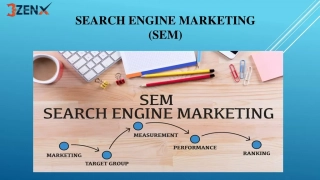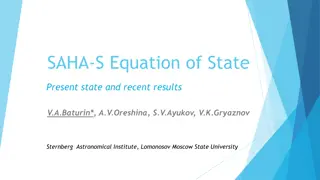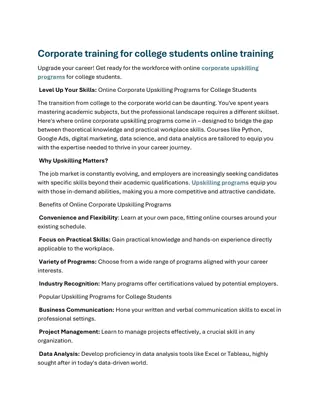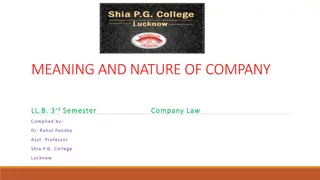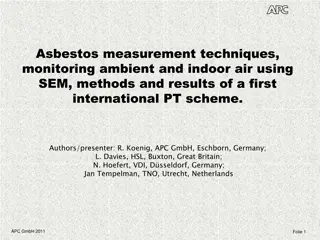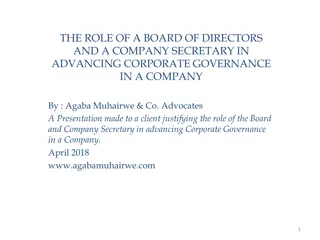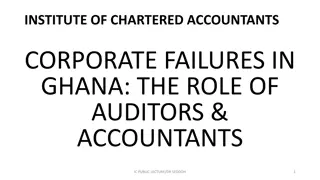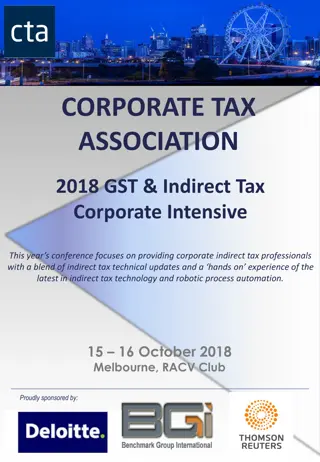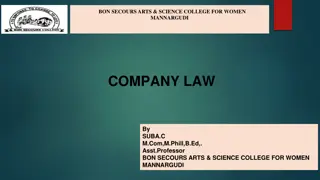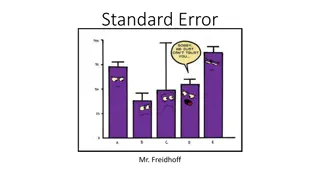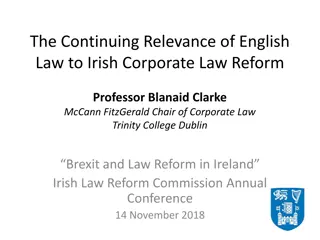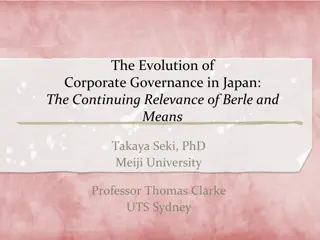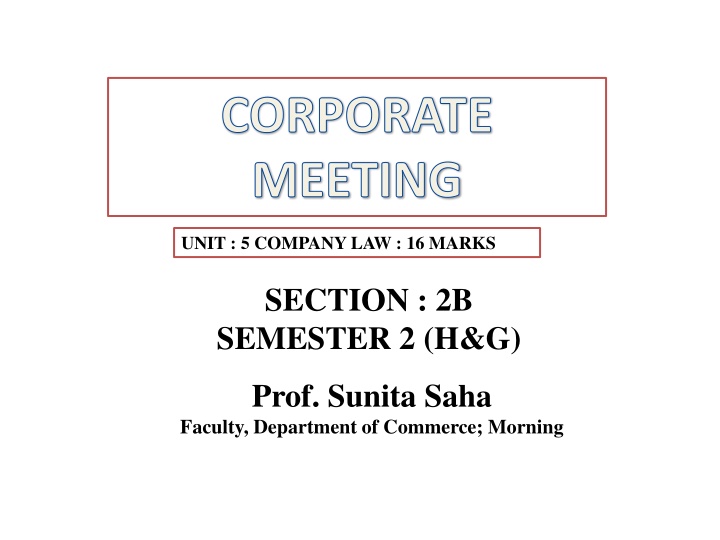
Company Meetings and Annual General Meetings in Company Law
Explore the essential aspects of corporate meetings, including shareholder and board interactions, types of meetings, meeting procedures, and statutory provisions under the Companies Act, 2013. Learn about the significance of Annual General Meetings (AGM) in safeguarding shareholder interests, the business to be transacted in AGMs, and the power of the Tribunal to intervene in case of default in holding AGMs.
Download Presentation

Please find below an Image/Link to download the presentation.
The content on the website is provided AS IS for your information and personal use only. It may not be sold, licensed, or shared on other websites without obtaining consent from the author. If you encounter any issues during the download, it is possible that the publisher has removed the file from their server.
You are allowed to download the files provided on this website for personal or commercial use, subject to the condition that they are used lawfully. All files are the property of their respective owners.
The content on the website is provided AS IS for your information and personal use only. It may not be sold, licensed, or shared on other websites without obtaining consent from the author.
E N D
Presentation Transcript
CORPORATE MEETING UNIT : 5 COMPANY LAW : 16 MARKS SECTION : 2B SEMESTER 2 (H&G) Prof. Sunita Saha Faculty, Department of Commerce; Morning
Contents 1. Corporate Meetings- Shareholders and Board 2. Types of Meetings- Annual General Meetings, Extra ordinary General meetings 3. Minutes of the proceedings of the general meetings 4. Meeting of the BOD and other meetings 5. Requisite of valid meeting 6. Notice, agenda, chairman, quorum, proxy, minutes, postal ballot, conferencing, board meetings, resolutions, e-voting, video
COMPANY MEETING The Companies Act, 2013 provides various statutory provisions for conducting meetings for decision making MEETINGS MEMBERS DIRECTORS BOARD OF DIRECTORS 1. Annual General Meeting 2. Extra Ordinary General Meetings 3. Class Meetings 4. Small Shareholders Meetings 5. Meeting through Postal Ballot 6. Meeting through E-Votings
ANNUAL GENERAL MEETING (Section 96) Meeting for safeguarding the interest of the shareholders of the company. Sec 96 of the Act 2013 states that every company other than One person company shall in each year hold a general meeting and shall specify in the NOTICE TIME: Every AGM shall be called during business hours, that is, 9 am to 6 pm on any day that is not a National Holiday. Held: Held at its registered office of the company or in some other places where the registered office of the company is situated. NOTICE (101): 21 days notice in writing or through electronic mode. Shorter Notice: Consent is to be given in writing or by electronic mode by not less than 95% of the members who are entitled to vote at the meeting. Period of meeting: (VERY IMPORTANT) 1. The first meeting shall be held with 9 months from the date of closing of the first Financial Year. 2. Subsequent AGM of the company should be held within 6 months from the date of the closing of the FY 3. Not more than 15 Months shall elapse between one GM and the next 4. Registrar may extend the period of AGM by 3 months on special reason but not the first AGM.
Business to be transacted in the AGM 102(2) ORDINARY BUSINESS SPECIAL BUSINESS 1. Confirmation of the financial statements and reports of the BOD and auditors 2. Declaration of dividend 3. Appointment of directors in place of retiring one 4. Appointment of and fixation of remuneration auditors 1. Apart from the above businesses the rest are deemed to be a special business transacted during the AGM Example: a. Removal of director b. Issue of right or bonus shares of the Persons entitled to NOTICE 1. Every shareholder/ member of the company 2. Legal representative of any deceased member 3. The auditor of the company 4. Every director of the company 5. Assignee of an insolvent member
POWER OF THE TRIBUNAL TO CALL ANNUAL GENERAL MEETING If any default is made in holding the annual general meeting of the company the Tribunal on application of the member of the company may call an AGM DEFAULT IN HOLDING AGM SECTION 99 1. Every officer of the company who is in default shall be punishable with a fine which may extend to 1 LAKH 2. In case of continuing default with a further fine which may extend to Rs 5,000 for each day during which the default continues
EXTRA ORDINARY GENERAL MEETING 100 1. The kind of meeting by then Board of Directors 2. Such meeting is to be held between two consecutive AGM for transacting some special or urgent business 3. All the item are in special in nature 4. An explanatory statement is given containing all the material facts related to every item in the agenda 5. It must specify nature of interest of the members in the meeting
Explanatory Statement To be annexed to NOTICE 102 1. A statement setting out the following material facts concerning each item of special business. 2. The nature of concern, interest, financial in respect of any item of resolution. 3. Where any special business relates to any other company the extent of shareholders interest in other company. 4. The time and place where such document can be inspected shall be specified in the statement.
WHO CAN CONVENE AN EXTRA ORDINARY GENERAL MEETING EOGM 1. The Board may whenever deem fit may call an EOGM 2. The Board can also call an EOGM on submission of requisition by not less than 1/10th of the paid up share capital of the company carrying voting right. 3. In case a company not having share capital by not less than 1/10th of the voting power of all the members having the right to vote 4. If the Board fails to call an EOGM within 45 days from the date of submission of the valid requisition then within 3 months from the date of submission the meeting is held Power of the Board to Convene EOGM 1. The Tribunal either suo moto or on requisition of any director or member of the company who are entitled to vote order the meeting
Minutes of the proceedings of the General Meeting 1. Minute is the proceedings of the meeting either it is general meeting or Board Meeting 2. Within 30 days from the date of the closure of the meeting the proceedings must be recorded. 3. The minute shall contain a fair and correct summary of the proceedings of the meeting 4. In case of Board Meeting the meeting shall contain the names of the directors present at the meeting resolutions passed in the meeting 5. The chairman shall exercise absolute discretion in regard to the inclusion or non inclusion of any matter in the minutes 6. Apart from the resolution of the meeting the minute shall mention the brief background of all the proposals. 7. The chairman will record the mode of presence of the director or any member in the meeting. 8. If any default is made in complying with the provisions of this section the company shall be liable with a penalty of 25,000 and every officer of the company who is in default shall be liable to s penalty of 5,000 9. The book in which the record of the proceedings of a meeting is kept is known as minute book
MEETING OF THE BOARD OF THE DIRECTORS 173 1. The Purpose of the BM (Board Meeting) is to make sure management is acting in the best interest of the shareholders 2. Every company shall hold the first meeting of the BOD within 30 days from the days of the incorporation of the meeting 3. For OPC , Small Company and Dormant company at least one meeting in each calendar year and minimum 90 days gap 4. For any other company minimum 4 meetings of the BOD in a calendar year and maximum gap between two meeting should not be more than 120 days. 5. A meeting of the Board shall be called by giving not less than 7 days notice in writing to every director. 6. A meeting of the BOD can be called by shorter notice. 7. 1/3rd of the total strength or two directors whichever is higher shall constitute board meeting 8. If the meeting of the Board could not held for want of quorum, then meeting shall be held to be adjourned.
POSTAL BALLOT 110 1. Alteration of the object clause of the MOA 2. Change in place of registered office 3. Change in the object of the company 1. The company shall send notice to all the shareholders along with draft resolution explaining the reason therefore and requesting them to send their assent or dissent in writing in writing on a postal ballot because postal ballot means voting by post or through electronic means within 30 days from the from the date of dispatch of the notice. 2. An advertisement shall be published at least once in a vernacular newspaper and in one English newspaper.
ORDINARY AND SPECIAL RESOLUTION RESOLUTION Special Resolution passed by three times majority ie more than 75% Ordinary Resolution Passed by simple majority ie more than 50% 1. Specified Majority 75% 2. Resolution shall be set out in the notice 3. Proper notice of 21 days is given for holding the meeting 4. Explanatory statement for conducting special business
ORDINARY RESOLUTION 1. Change the name of the company 2. Alteration of share capital 3. Remuneration of the auditor of the company is fixed. 4. Appointment of auditor and fixation of remuneration 5. Appointment of first director who is liable to retire by rotation 6. appointment of MD/WTD 7. Approval for appointment of sole selling agent 8. Winding up of the company voluntarily.
SPECIAL RESOLUTION 1. To shift the registered office outside the local limits of any city, town or village 2. To vary the terms of contract referred to in the prospectus or objects for which the prospectus was issued. 3. To alter the articles of association 4. Reduction of share capital 5. Variation of shareholder s right 6. Applying to the Tribunal for winding up of the company 7. Payment of interest out of capital.
E-VOTING 108 1. Every listed company and every company having not less than 1000 members shall provide its members the facility to exercise right to vote on the resolution proposed to be considered at a general meeting by electronic means. 2. The notice of the meeting shall be sent to all the members, directors, auditors of the company either through electronic means or through speed post or through courier services. 3. For providing e voting facilities the services of NSDL (national securities depository limited) needs to utilized 4. The members whose names are registered in the register of members are eligible to vote through electronic means. 5. Notice of e voting must be given in the company s website. 6. The facility for e voting shall remain open for not less than 3 days and shall close at 5.00 pm on the date preceding the date of the general meeting. 7. The person opting for e voting who are not personally present must not be counted for quorum 8. The BOD may appoint scrutinizers who may be practicing cost accountant, chartered accountant or company secretaries. 9. The scrutinizers shall prepare a report and disclose it while the result is declared 10. The chairman of the meeting shall allow the voting by poll only after e voting closes.
PROXIES 105 1. Any member entitled to attend and vote at the meeting shall be entitled to appoint a proxy 2. The appointment of proxy shall be in form no MGT.11 3. A proxy shall not have any right to speak or any right to vote except on poll. 4. This provision is not applicable for companies which are not having share capital. 5. Proxy shall be deposited before 48 hours from the date of the meeting 6. Any invitation to appoint a proxy must not be made at the expense of the company and if any company does that then the officer shall be punishable by Rs 1,00,000
QUORUM FOR GENERAL MEETING 103 1. In case of a public company 5 members personally present if the members as on the date of meeting is not more than 1000 2. 15 members personally present if the number of members as on the date of meeting is more than 1000 but upto 5000 3. 30 members personally present if the numbers as on the date of the meeting exceeds 5000 4. 2 in caseof private company shall be the quorum of meeting 5. If the quorum is not present for half an hour the meeting shall stand to be adjourned to the same day in the next week at the same time and place or to such other date and such other time and place as the Board may determine.
CHAIRMAN OF THE MEETING 104 For the proper conduct of the meeting a chairman is necessary. He is the presiding officer of the company. If there is nothing in the articles, the members personally present at the meeting shall elect one of themselves to be the chairman of the meeting on show of hands. Duties of the Chairman 1. He must act all the times bonafide and in the interest of the company. 2. He must ensure that the meeting is properly convened 3. He must ensure that the provisions of Acts and Articles are observed. 4. He must see that all the businesses transacted at the meeting is within the scope of the meeting 5. He must exercise his casting vote in the best interest of the company. 6. He must give the members present at the meeting sufficient opportunity to express their opinion.
VEDIO CONFERENCING FOR THE BOARD MEETING As stated in Section 173(2) of Companies Act, 2013 read with Rule 3 of the Companies (Meeting of Board and its Powers) Rules, 2014, The participation of directors in a meeting of the Board may be either in person or through video conferencing or other audio visual means as may be prescribed, which are capable of recording and recognizing the participation of the directors and of recording and storing the proceedings of such meetings along with date and time. The approval of the annual financial statements ii. The approval of the Board s report; iii. The approval of the prospectus; iv. The approval of the matter relating to amalgamation, merger, demerger, acquisition and takeover Meaning of video conferencing or other audio visual means audio- visual electronic communication facility employed which enables all the persons participating in a meeting to communicate concurrently with each other without an intermediary and to participate effectively in the meeting.
AGENDA Features or characteristics of agenda The features of agenda can be stated as follows: 1. Generally, agenda is sent along with the notice of the meeting. 2. It is written at the end but before or after the signature of the convener of the meeting. 3. It is arranged according to the importance of the end. Controversial topics should be written at the end. 4. The topics are determined by the secretary with consulting the higher authority or the convener of the meeting. 5. It is written in brief but explicit manner. Agenda means things to be done. It is usually sent along with the notice of the meeting. It is a list of the topics to be discussed in a meeting.
READ THE PROVISIONS CAREFULLY AND SECTIONS OF THE CHAPTER

